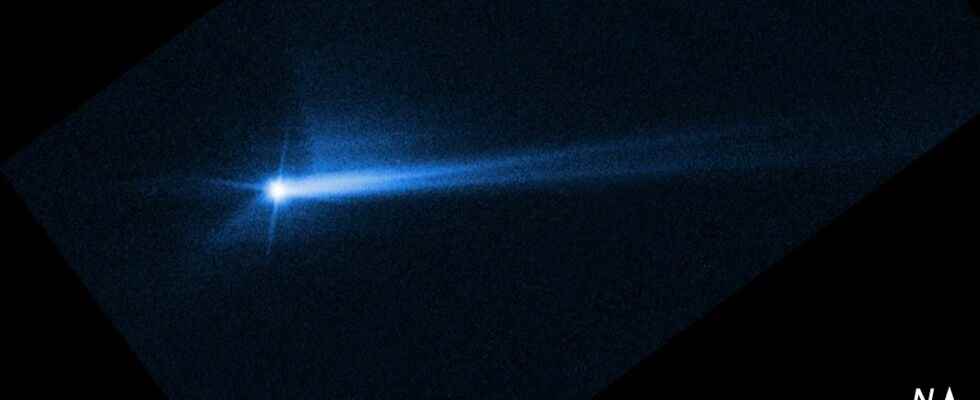Since the collision between the DART probe and Dimorphos, the small moon of the asteroid Didymos, the telescopes on Earth and in orbit carefully scrutinized the duo of near-Earth cruisers. And good news, it confirms expectations: the huge impact shows a significant deviation.
Better still, the behavior of the surface of Dimorphos is of great interest to the scientific community.
DART on target
First there were images from telescopes from major institutions on Earth, which shared their spectacular shots within minutes. Then the photographs of the large orbital telescopes Hubble and James Webb, which showed the impressive “tail” of debris. And that’s without forgetting the fantastic images delivered by the tiny LICIACube probe, which filmed the collision of DART with Dimorphos “live” on September 26th.
An impressive collection of data, not to mention the very important radar data to accurately calculate the changes in orbital parameters of Dimorphos. The latter orbited Didymos, its parent asteroid, in 11 hours and 55 minutes. DART, which crashed on it with a difference of only 17 meters (an exceptional precision of automated guidance), changed its trajectory quite a bit. Now it only takes 11 hours and 23 minutes for Dimorphos to orbit! As expected, Dimorphos’ shortened orbit will have no influence on the duo’s overall trajectory.
Very successful mission
If before the impact, the result was essentially due to simulations, the scientists of the mission estimated that the DART demonstration would be successful with a measured deviation of just over a minute (75 seconds)… The measurement is 25 times greater , the contract is fulfilled!
” New data is coming in every day, and astronomers are deciphering it to quantify the effects of DART, and how a similar mission could be used in the future to protect Earth from colliding with an asteroid, should it ever happen. detect one on our trajectory one day says Lori Glaze, head of planetary science for NASA.
Much to understand and analyze
Of course, the impact on the asteroid, although well documented, will be the subject of many studies in the years to come. The shape of the ejecta, in particular, with these “threads” of matter, does not correspond to the simulations (the aggregates of matter are not supposed to behave like a liquid). Much remains to be understood, including the behavior of the hundreds of tons of material that now form a cloud behind the asteroid duo.
The planned arrival of the European probe Hera around Didymos and Dimorphos after its takeoff in 2024 is therefore highly anticipated. In the meantime, planetary defense has made good progress: deflecting a small asteroid at a lower cost (an impactor is the simplest solution) is therefore possible, if the space powers have a little time to prepare for it. .
DART is definitely one of the space hits of the year!
Source : NASA

15